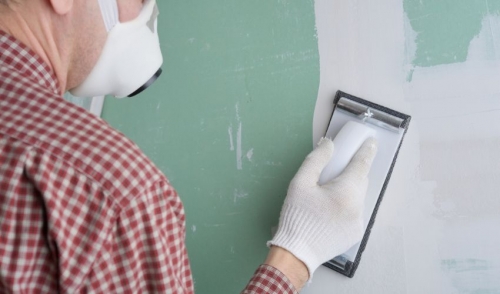{article.name}
Should Sheetrock Be Staggered?

- Share this:
- Share on Facebook
- Pin on Pinterest
- Tweet on Twitter
Properly positioning sheetrock or drywall is essential for a smooth finish and the best strength, while minimizing the risk of future cracks. But is it always worthwhile to stagger sheetrock?
Why Sheetrock Should Be Staggered
Sheetrock can be hung in even, parallel rows or it can be staggered to create T-shaped junctions. Ultimately, staggered seams are stronger because the joints – the weakest part of the wall or ceiling installation – are minimized. Staggered joints are also less visible and easier to conceal for a flawless finish, offering a smoother, more professional look to the completed job. Yet there are times with small jobs when staggering sheetrock is not always the best choice.
Difficulties of Staggering Sheetrock
Staggering sheetrock creates more T-shaped seams, which require more careful measurements and precise cutting to ensure they fit together smoothly and can be concealed properly with joint compound, tape, and finishing textures. When staggering drywall, the butt edges of the panel, which are rough cut edges with the gypsum exposed, must be positioned together. Similarly, the bound edges that have a slight taper must also be aligned together. Butt joints are generally weaker because they have less joint compound to fuse them together, but they are often unavoidable when staggering sheetrock.
In large spaces, it can be easier to stagger drywall, but in smaller spaces, it may be more complicated to make the proper cuts and align the sheetrock edges most precisely. Ideally, staggered sheetrock is best, but each job must be considered individually to choose the best option for hanging drywall.
Factors to Consider When Hanging Sheetrock
Every job is unique and a professional sheetrock installer will take a variety of factors into consideration when deciding whether or not to stagger sheetrock. Considerations to make include…- Time – It takes longer to stagger sheetrock than to align panels in parallel. If the job must be done with a tight timeline, such as for emergency repairs or if the project is already behind schedule, staggering may not be the most practical choice.
- Surface Area – How much drywall must be hung has to be considered when planning a parallel or staggered pattern for sheetrock panels. The wall length and ceiling area must be calculated, and staggering or not staggering the sheetrock may impact how many panels are needed to complete the job.
- Purpose – The type of finished job should be considered when hanging sheetrock. If the project only needs a rough finish, such as for a storage area, garage, or shed, staggering may not be worthwhile. If the room is a finished gathering space, however, it is often better to put the time and effort in to staggering the sheetrock for smoother, more seamless results.
- Cost – Because of the extra time and labor required to smoothly stagger sheetrock, it often costs more for the project than if the drywall were installed in parallel. Staggering can also eliminate expensive and time-consuming repairs down the road, however, so those future costs should also be part of budget considerations for the initial project.
Sign up for our Email List
Stay updated with all our latest posts, products and offers! Just enter your information below.

Comments